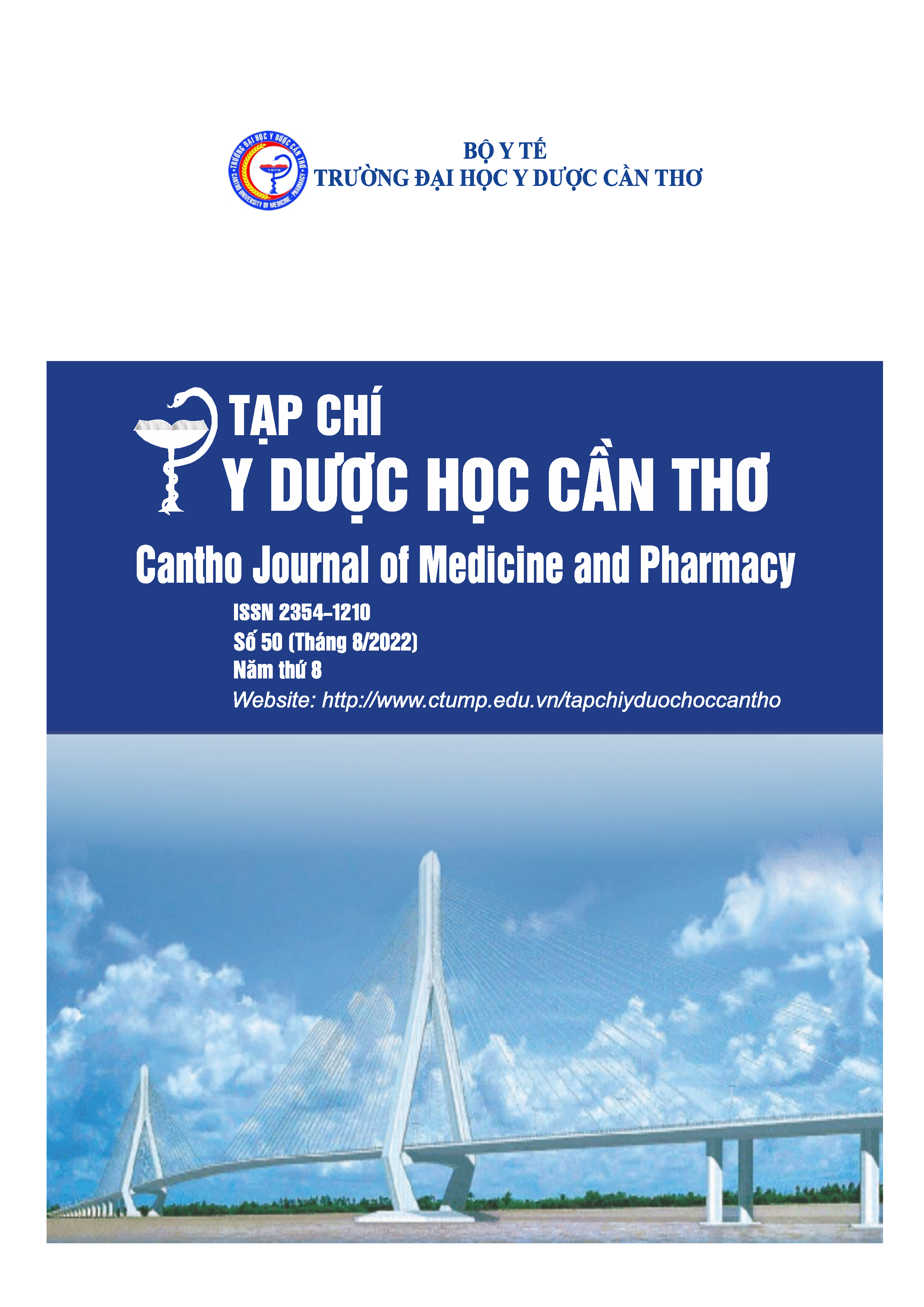BARRIERS TO ACCEPT INFLUENZA VACCINATION OF HEALTHCARE WORKERS IN CAN THO CITY IN 2020
Main Article Content
Abstract
Background: Many healthcare workers are hesitant to vaccinate against seasonal influenza virus even though health workers are at high risk due to their frequent exposure to pathogens in the working environment. Objectives: To identify the rate of barriers affecting influenza vaccination and some related factors among healthcare workers. Material and method: A cross-sectional study was conducted on 706 healthcare workers in 14 health centers in Can Tho city in 2020. Results: Results showed the barriers of influenza vaccination was mainly related to concerns about effectiveness of the vaccine, the cost of the vaccine, side effects of the vaccine and origin of the vaccine. There was a statistically significant relationship (p<0.05) between barriers to accepting influenza vaccination among health workers, based on characteristics such as age group, marriage, workplace, unit, field, work year, history of severe influenza, frequency of influenza and kind of received vaccine. Conclusion: There are still a large number of barriers that affect the decision to accept the seasonal influenza virus vaccine. It is necessary that taking a system of appropriate interventions for each group of barriers and associated factors to increase influenza virus vaccination rate among healthcare workers.
Article Details
Keywords
Vaccination, Influenza virus vaccination, barriers, healthcare workers
References
2. Black CL, Yue X, Ball SW, et al. (2016), “Influenza Vaccination Coverage Among Health Care Personnel - United States, 2015-16 Influenza Season”, Morb Mortal Weekly Rep, 65: pp.1026-1031.
3. Davorina Petek et al. (2018), “Motivators and barriers to vaccination of health professionals against seasonal influenza in primary healthcare”, BMC Health Services Research, 18, pp.853.
4. Lise Boey, et al. (2018), “Attitudes, believes, determinants and organisational barriers behind the low seasonal influenza vaccination uptake in healthcare workers – A cross-sectional survey”, Science Direct Vaccine, 36 (23), pp.3351-3358.
5. Maltezou HC, Katerelos P, Protopappa K, Dounias G (2019), “Seasonal influenza vaccination in healthcare personnel in Greece: 3-year report”, Future Microbiol, 14, pp.55-58.
6. Siew Wai Hwang, et al. (2014), “Barriers and Motivators of Influenza Vaccination Uptake Among Primary Healthcare Workers in Singapore”, Proceedings of Singapore Healthcare, 23(2), pp.126-133.
7. Stead M, Critchlow N, Patel R, et al. (2019), “Improving uptake of seasonal influenza vaccination by healthcare workers: implementation differences between higher and lower uptake NHS trusts in England”, Infect Dis Health, 24, pp.3-12.
8. Thoa Thi Minh Nguyen et al. (2020), “Acceptability of seasonal influenza vaccines among health care workers in Vietnam in 2017”, Vaccine, 38(8), pp.2045-2050.
9. Vasilevska M, Ku J, Fisman DN (2014), “Factors associated with healthcare worker acceptance of vaccination: a systematic review and meta-analysis”, Infect Control Hosp Epidemiol, 35(6), pp.699-708.
10.Wayan C.W.S Putri, David J.Muscatello, Melissa S. Stockwell, Anthony T.Newall (2018), “Economic burden of seasonal influenza in the United States”, Vaccine, 36(27), pp.3960-3966.


